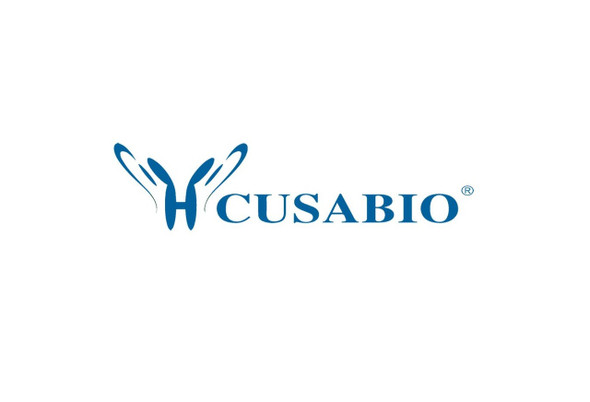Cusabio Human Recombinants
Recombinant Human Ras-related protein Rab-17 (RAB17) | CSB-EP863944HU
- SKU:
- CSB-EP863944HU
- Availability:
- 13 - 23 Working Days
Description
Recombinant Human Ras-related protein Rab-17 (RAB17) | CSB-EP863944HU | Cusabio
Alternative Name(s): AW413472; FLJ12538; OTTHUMP00000164417; OTTHUMP00000202805; Rab 17; Rab17; RAB17 member RAS oncogene family; RAB17_HUMAN; Ras related protein Rab 17; Ras related protein Rab17; Ras-related protein Rab-17
Gene Names: RAB17
Research Areas: Signal Transduction
Organism: Homo sapiens (Human)
AA Sequence: MAQAHRTPQPRAAPSQPRVFKLVLLGSGSVGKSSLALRYVKNDFKSILPTVGCAFFTKVVDVGATSLKLEIWDTAGQEKYHSVCHLYFRGANAALLVYDITRKDSFLKAQQWLKDLEEELHPGEVLVMLVGNKTDLSQEREVTFQEGKEFADSQKLLFMETSAKLNHQVSEVFNTVAQELLQRSDEEGQALRGDAAVALNKGPARQAKCCAH
Source: E.coli
Tag Info: N-terminal GST-tagged
Expression Region: 1-212aa
Sequence Info: Full Length
MW: 50.5 kDa
Purity: Greater than 90% as determined by SDS-PAGE.
Relevance: The small GTPases Rab are key regulators of intracellular membrane trafficking, from the formation of transport vesicles to their fusion with membranes. Rabs cycle between an inactive GDP-bound form and an active GTP-bound form that is able to recruit to membranes different set of downstream effectors directly responsible for vesicle formation, movement, tethering and fusion. That Rab is involved in transcytosis, the directed movement of endocytosed material through the cell and its exocytosis from the plasma membrane at the opposite side. Mainly observed in epithelial cells, transcytosis mediates for instance, the transcellular transport of immunoglobulins from the basolateral surface to the apical surface. Most probably controls membrane trafficking through apical recycling endosomes in a post-endocytic step of transcytosis. Required for melanosome transport and release from melanocytes, it also regulates dendrite and dendritic spine development. May also play a role in cell migration.
Reference: "The recycling endosome protein Rab17 regulates melanocytic filopodia formation and melanosome trafficking." Beaumont K.A., Hamilton N.A., Moores M.T., Brown D.L., Ohbayashi N., Cairncross O., Cook A.L., Smith A.G., Misaki R., Fukuda M., Taguchi T., Sturm R.A., Stow J.L. Traffic 12:627-643(2011)
Storage: The shelf life is related to many factors, storage state, buffer ingredients, storage temperature and the stability of the protein itself. Generally, the shelf life of liquid form is 6 months at -20?/-80?. The shelf life of lyophilized form is 12 months at -20?/-80?.
Notes: Repeated freezing and thawing is not recommended. Store working aliquots at 4? for up to one week.
Function: The small GTPases Rab are key regulators of intracellular membrane trafficking, from the formation of transport vesicles to their fusion with membranes. Rabs cycle between an inactive GDP-bound form and an active GTP-bound form that is able to recruit to membranes different set of downstream effectors directly responsible for vesicle formation, movement, tethering and fusion. That Rab is involved in transcytosis, the directed movement of endocytosed material through the cell and its exocytosis from the plasma membrane at the opposite side. Mainly observed in epithelial cells, transcytosis mediates for instance, the transcellular transport of immunoglobulins from the basolateral surface to the apical surface. Most probably controls membrane trafficking through apical recycling endosomes in a post-endocytic step of transcytosis. Required for melanosome transport and release from melanocytes, it also regulates dendrite and dendritic spine development (By similarity). May also play a role in cell migration.
Involvement in disease:
Subcellular Location: Recycling endosome membrane, Lipid-anchor, Cytoplasmic side, Melanosome, Cell projection, dendrite
Protein Families: Small GTPase superfamily, Rab family
Tissue Specificity: Expressed in melanocytes (at protein level).
Paythway:
Form: Liquid or Lyophilized powder
Buffer: If the delivery form is liquid, the default storage buffer is Tris/PBS-based buffer, 5%-50% glycerol. If the delivery form is lyophilized powder, the buffer before lyophilization is Tris/PBS-based buffer, 6% Trehalose, pH 8.0.
Reconstitution: We recommend that this vial be briefly centrifuged prior to opening to bring the contents to the bottom. Please reconstitute protein in deionized sterile water to a concentration of 0.1-1.0 mg/mL.We recommend to add 5-50% of glycerol (final concentration) and aliquot for long-term storage at -20?/-80?. Our default final concentration of glycerol is 50%. Customers could use it as reference.
Uniprot ID: Q9H0T7
HGNC Database Link: HGNC
UniGene Database Link: UniGene
KEGG Database Link: KEGG
STRING Database Link: STRING
OMIM Database Link: OMIM









